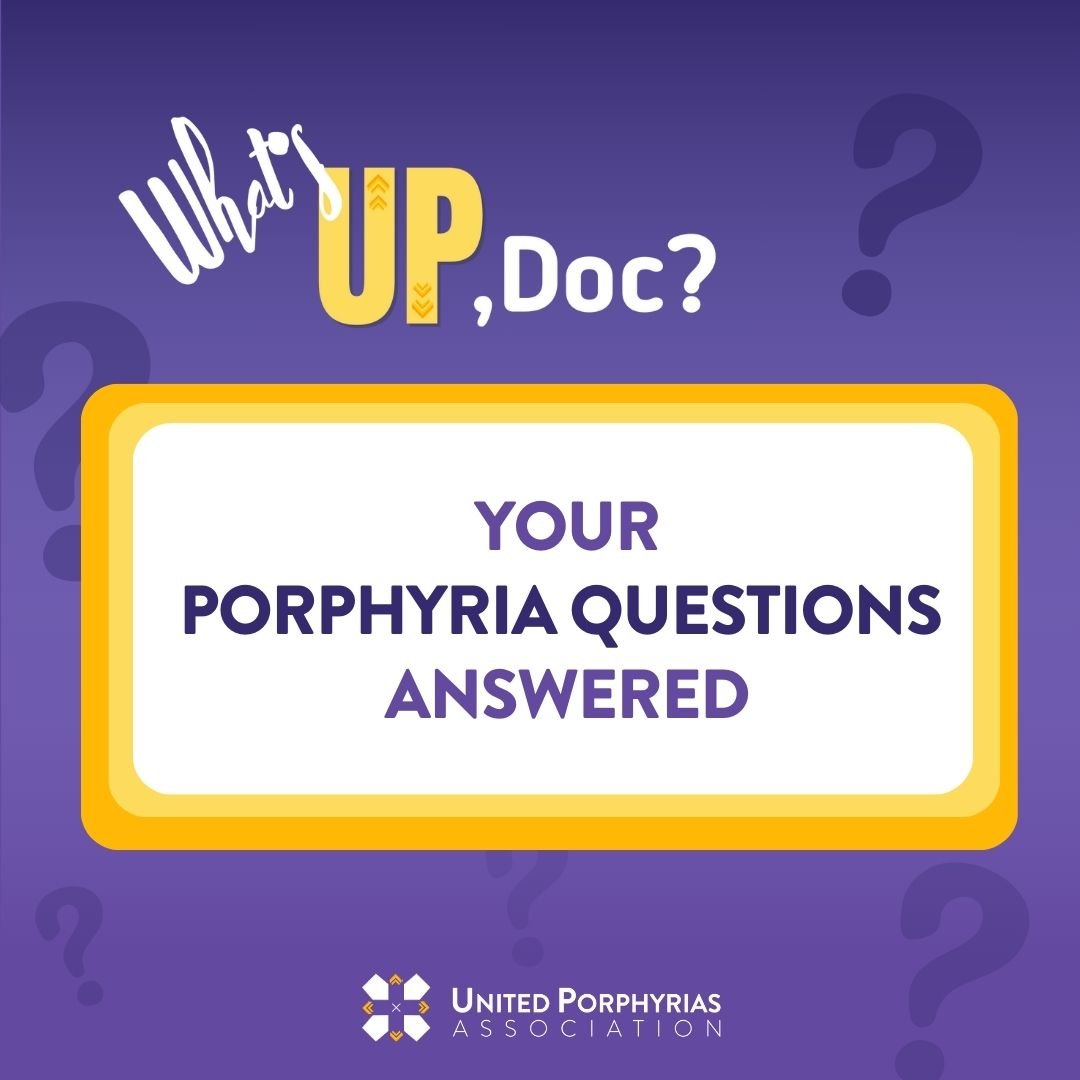Acute porphyria and homocysteine
What's UP Doc? Is a regular column where we feature a patient question along with a response from a member of the UPA Scientific Advisory Board.
What should a person with Acute Hepatic Porphyria know about homosysteine and is there guidance for patients to follow?
This week, Dr. Manisha Balwani and Dr. John Phillips, wrote a joint response to this important question.
Homocysteine is an amino acid, a chemical your body uses to make proteins. Under normal conditions, vitamins B12, B6 and folate are used to process homocysteine to create other substances your body needs. When homocysteine is elevated it is called hyperhomocysteinemia and refers to an increased level of total homocysteine in the blood. Normal levels of total homocysteine are less than 15 µmol/L, mild elevations are >16-30 µmol/L, and severe homocysteine elevation is usually >100 µmol/L. Significantly elevated levels of homocysteine have been associated with increased risk for blood clotting, heart disease, as well as neurologic diseases. However, the clinical significance of mild to moderate increases in homocysteine levels are unclear.
Genetic disorders in the homocysteine metabolic pathways have been found and often lead to significant levels of homocysteine. Nutritional deficiencies of folate, vitamin B12, or vitamin B6 can also result in mild to moderate homocysteine elevations. These acquired conditions can easily be treated with vitamin supplementation of the lacking nutrient.
Increased levels of homocysteine have been reported in some patients with Acute Hepatic Porphyrias (AHP) with recurrent attacks as well as some patients with high levels of ALA and PBG without active clinical symptoms. In some of these cases, patients also had low levels of vitamin B6. Homocysteine levels were shown to be higher in AHP patients with active clinical symptoms.
In clinical trials with AHP patients on Givosiran, it was noted that some of the Givosiran treated patients had elevated levels of homocysteine, although levels before treatment were not available for comparison. Other studies showed that Givosiran increased homocysteine levels in Acute Intermittent Porphyria (AIP) patients compared to pre-Givosiran treatment. Most patients had mild to moderate increases in homocysteine and some patients also had low levels of vitamin B6 and folate. Supplementing vitamin B6 in these patients resulted in a decrease or normalization of homocysteine levels.
Given this, monitoring of total homocysteine levels is recommended for AHP patients. Patients on Givosiran should have levels checked before and during treatment since levels can fluctuate over time. It is also important to monitor levels of vitamin B6, B12 and folate in AHP patients, particularly those on Givosiran. Patients with significantly increased levels (homocysteine >100 µmol/L) should receive vitamin B6 supplementation. This can also be considered in patients with moderately high levels of homocysteine. The clinical implications the increase in homocysteine in patients on Givosiran is unknown and needs to be monitored long term. As we increase our knowledge through long term follow up of patients, these recommendations may change over time.
Thank you to Dr. Balwani and Dr. Phillips for this What's UP Doc? answer! Do you have a question for a porphyria expert? Send it to info@porphyria.org.



